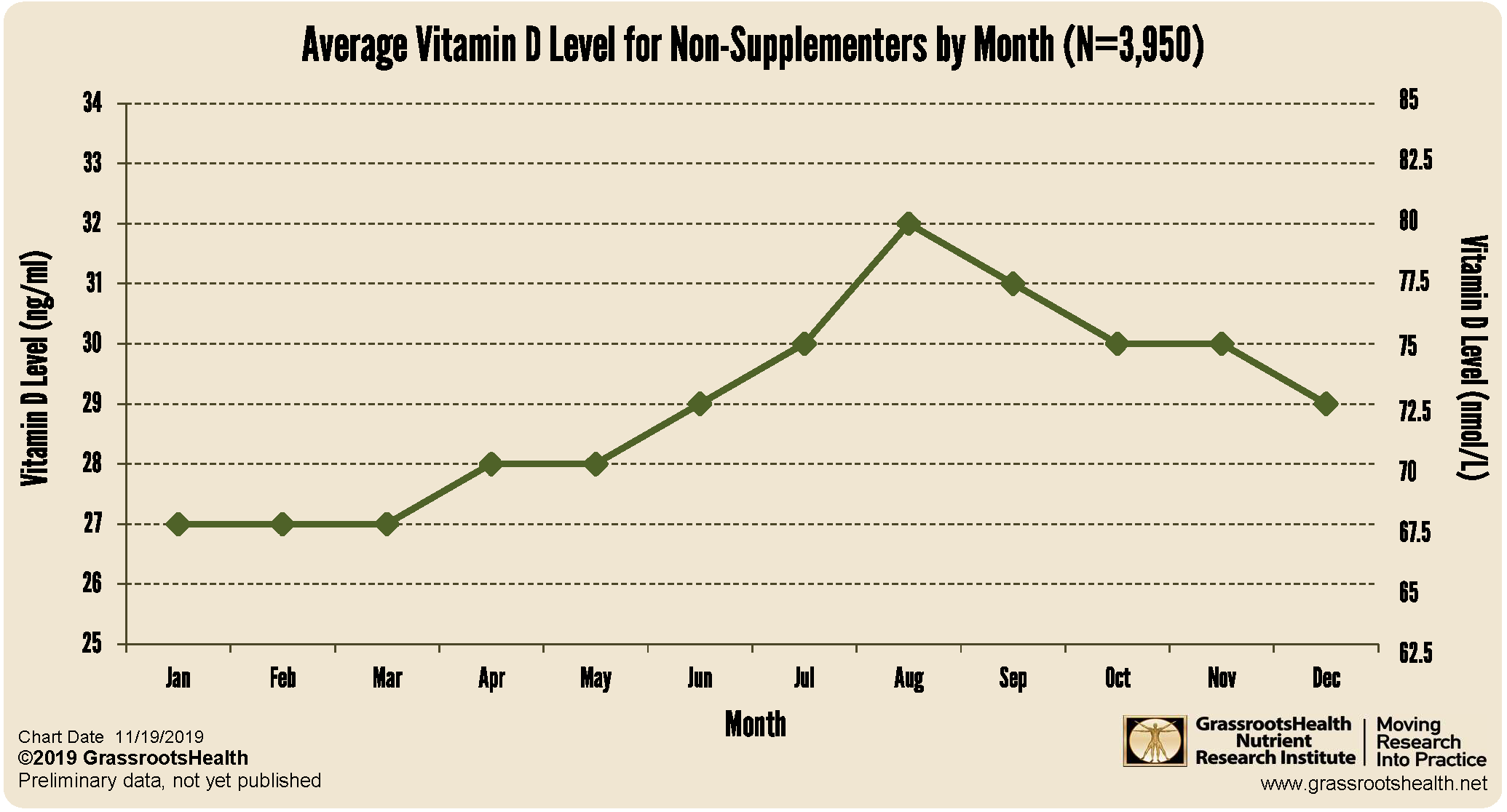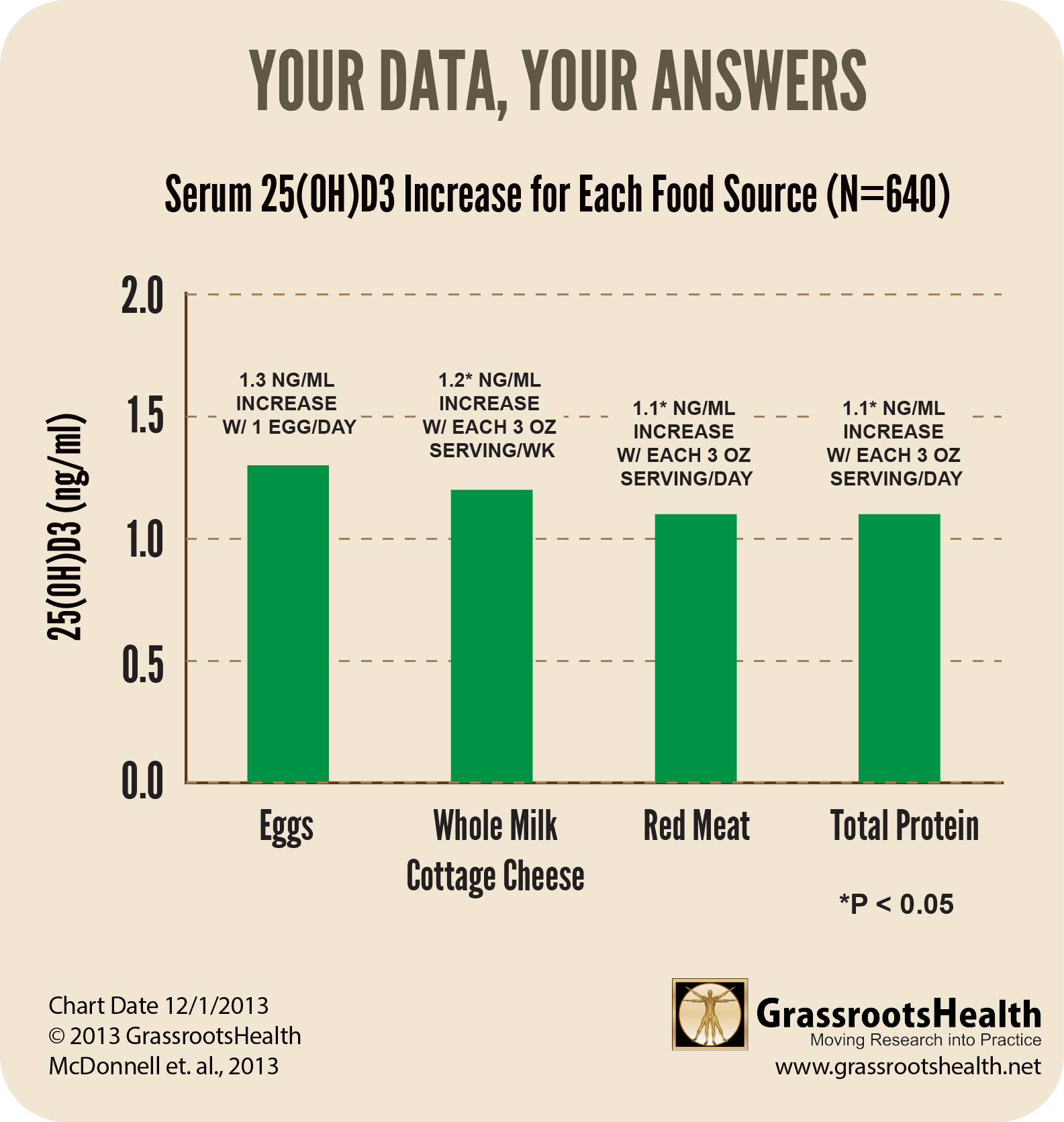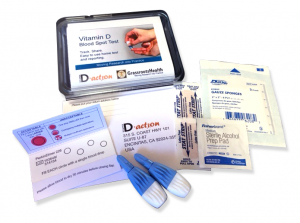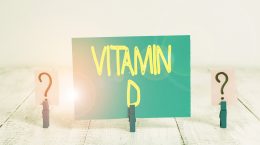Published on June 20, 2020
 The last vitamin D myth that we addressed was the statement that the only people who should be testing their vitamin D levels are those who are considered “high-risk” for deficiency. While there are certain individuals who are considered to be of higher risk for vitamin D deficiency, based on current levels in the general population, nearly everyone could be considered “high-risk” for deficiency. Another recent post gave a detailed explanation of why the current recommendation of 600 IU vitamin D per day, along with a target vitamin D serum level of 20 ng/ml, is simply not enough for general health.
The last vitamin D myth that we addressed was the statement that the only people who should be testing their vitamin D levels are those who are considered “high-risk” for deficiency. While there are certain individuals who are considered to be of higher risk for vitamin D deficiency, based on current levels in the general population, nearly everyone could be considered “high-risk” for deficiency. Another recent post gave a detailed explanation of why the current recommendation of 600 IU vitamin D per day, along with a target vitamin D serum level of 20 ng/ml, is simply not enough for general health.
With the above in mind, perhaps you already consider the myth addressed today, that anyone can get enough vitamin D from sun exposure and diet alone, as not true. Unfortunately, it’s not uncommon to hear advice such as “you probably get enough vitamin D with about 15 minutes to the face, arms, and hands at least twice a week without sunscreen” – even from your health care providers. But, is this possible? Today we present substantial evidence to show how unlikely it is, for most individuals, to get enough vitamin D just from their daily sun and food habits.
What are the vitamin D levels of those who don’t supplement?
Let’s first take a look at our own data to see what the vitamin D levels among those who don’t supplement are. Approximately 22% of GrassrootsHealth participants report that they do not take any vitamin D supplements. Using this data, we created a chart of the average vitamin D level for participants who do not use a vitamin D supplement by month to show the fluctuations in vitamin D levels over the year. As shown on the chart below, the lowest levels among GrassrootsHealth participants are between January and March. There is not a time during the year that these participants reach an average level of 40 ng/ml as recommended by our Scientists’ Panel.
All You Need is a Few Minutes of Sun Every Day?
Some studies do show that vitamin D levels in the range of 40-60 ng/ml can be achieved with sun exposure alone, in groups such as lifeguards in southern California or hunter-gatherer tribes in Africa. However, it takes more than exposing just the face, arms and legs for only 10-15 minutes per day for most people, and many may not be able get enough exposure simply due to other factors such as skin type, burning threshold, latitude, cloud cover, and time availability. For example, results from a study published in 2018 showed that Caucasians living in the UK needed nine minutes of mid-day sun with arms and legs exposed each day from March to September to maintain a vitamin D level at or above 10 ng/ml (25 nmol/L) year-round, which is significantly below the optimal range for health.
Other Sunshine Myths
 While we are on the topic, here are a few other myths about vitamin D and sunshine:
While we are on the topic, here are a few other myths about vitamin D and sunshine:
- The skin cannot produce vitamin D from sunlight shining through a window – so do not assume you are getting your D while driving in your car with the AC on and windows up. The windows block the UVB from sunlight.
- You cannot wash vitamin D produced in the skin off! So, no worries if you take a shower after spending some time at the beach – you’ll do a good job of washing the sand off, but that vitamin D (which was produced in the deeper layers of the skin) will remain.
- Don’t expect to make vitamin D while also slathering on the sunscreen. Sunscreen blocks the UVB rays that produce vitamin D.
Can You Get Enough Vitamin D from Food?
In an earlier version of the GrassrootsHealth D*action questionnaire than what you see today, there was a larger section on diet. We used data from this section for 780 non-supplement taking participants, aged 16 years or older, to analyze food sources of vitamin D. This group had a mean serum 25(OH)D of 33 ng/ml, a mean age of 48 years, and 65% were female.
Foods that had an impact on vitamin D levels were eggs, meat, and total protein. We found that serum 25(OH)D rose by about 2 ng/ml for each daily serving of eggs, and 1 ng/ml for each daily serving of meat and total protein. For each weekly serving of whole milk cottage cheese, serum 25(OH)D rose by about 1 ng/ml.
Neither fish nor milk – both considered traditional food sources of vitamin D – was positively associated with vitamin D serum level in this cohort. Other foods that did not seem to make a difference were butter, fruits/vegetables, olive oil, mayonnaise, cream cheese, or sour cream.
In the past, we did feature a profile of a D*action participant who has shown that it is possible to get enough vitamin D to maintain good health from food alone, but you will see that she does not have a typical western diet. While certain food sources can contribute significantly to vitamin D status, it is likely that vitamin D supplementation will remain key to improving vitamin D status at a population level.
Putting it All Together
In conclusion, while it is possible to get enough vitamin D from sun and food alone, as demonstrated by groups such as lifeguards in Southern California, or others who eat a very strict diet, it certainly is not likely for most.
Don’t just assume you are getting enough vitamin D!
Testing your vitamin D level regularly and taking steps to keep it at a target level of 40-60 ng/ml (100-150 nmol/L) is important for all stages of health.
Through GrassrootsHealth Nutrient Research Institute, you can also test your essential elements magnesium, copper, zinc and selenium, toxins such as lead, mercury and cadmium, as well as your omega-3 levels, inflammation levels and thyroid stimulating hormone (TSH) level. Find out your levels today! Log on to the test selection page (click the link below) to get your tests and see for yourself if your levels can be improved.
Make sure you track your results before and after, about every 6 months!
How can I track my nutrient intake and levels over time?
To help you track your supplement use and nutrient levels, GrassrootsHealth has created the Personal Health Nutrient Decision System called
For each specific supplement, you can track what days you take it, how much, and many other details. This will help you know your true supplemental intake and what patterns of use work for you to reach and maintain optimum nutrient levels. Check it out today!









